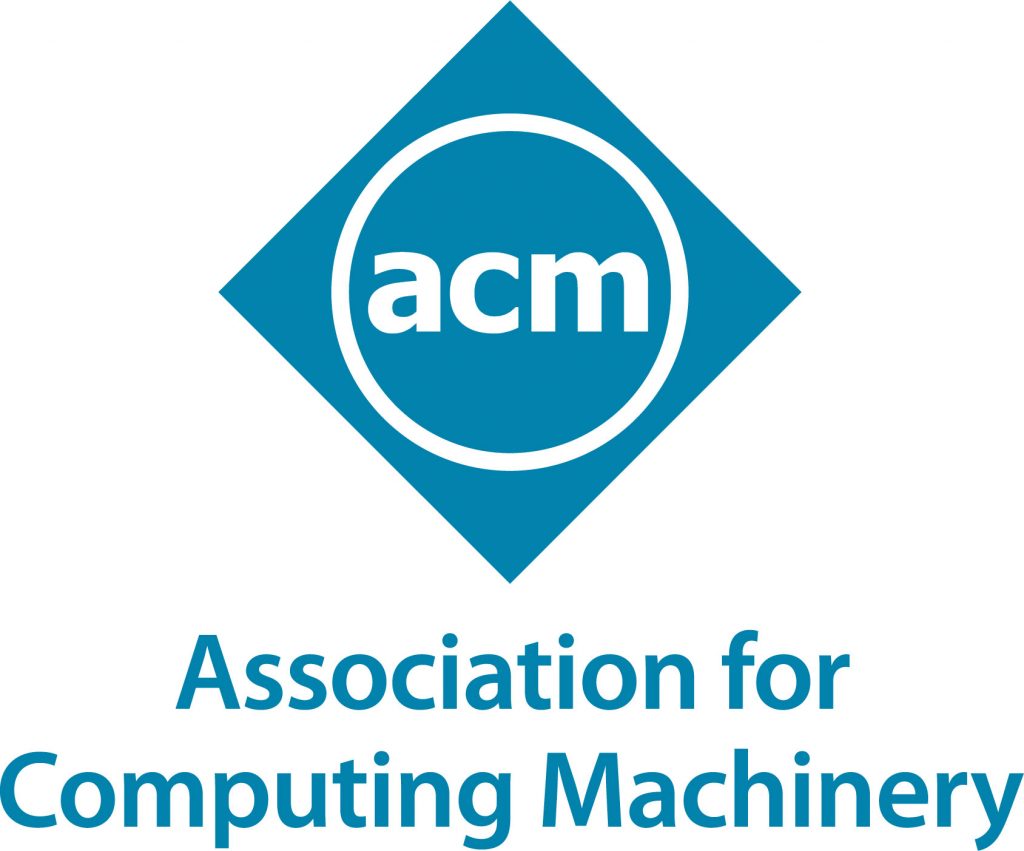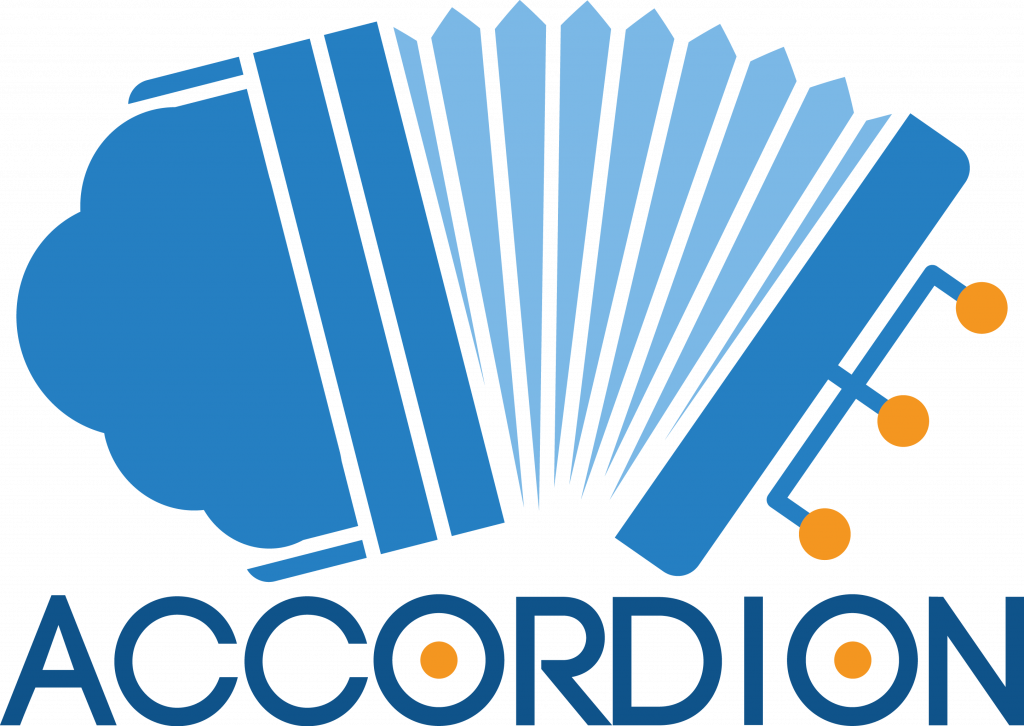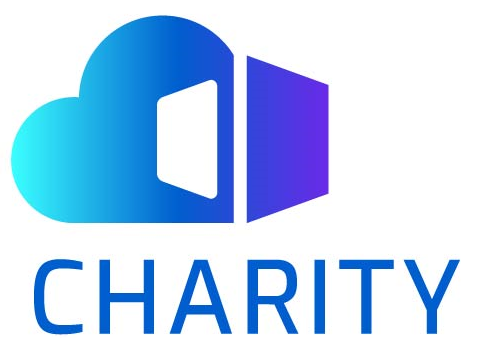FRAME
2nd workshop on Flexible Resource and Application Management on the Edge
In association with ACM HPDC 2022
Minneapolis, Minnesota, United States
June 27 – July 1, 2022
We are proud to introduce the 2nd workshop on Flexible Resource and Application Management on the Edge to researchers, industry stakeholders, academics and PhD students.
In association with
IMPORTANT DATES
- Submission of regular papers, posters and WIP papers:
March 25, 2022April 4, 2022 - Notification of acceptance/rejection:
April 22, 2022April 26, 2022 - Camera Ready Paper submission: May 6, 2022
- Registration
- Author Instructions
- Program Committee
In order to participate to the FRAME workshop, attendees shall register with the main HPDC conference. One author of each accepted paper has to register for HPDC’22 with author registration, using the following link: register
Submissions and attendance
Submissions and attendance
Accepted papers will be published in the conference Proceedings and in the ACM digital Library. Submitted papers must be original work that has not appeared in and is not under consideration for another conference or a journal. Every submitted paper will be reviewed by at least three members of the Program Committee. Reviewing will be single blind. Authors are invited to submit papers of the following types and lengths, in the ACM Proceedings format style:
- Regular papers (maximum 6 pages) should present innovative works whose claims are supported by solid justifications.
- Short papers (maximum 4 pages) should target position papers that articulate a high-level vision, describe challenging
future directions in the area of Edge Cloud resources management - Work-in-Progress/ Virtual Posters (maximum 2 pages) are expected to present work that is less mature but holds promise,
but do not merit a full submission.
Please note that registering on the submission site with a title and meaningful abstract by the earliest deadline is required for enabling the actual paper submission. Proofs and additional material omitted due to space constraints can be put into an appendix to be read at the reviewers’ discretion. Proofs added into appendix will not be published in the proceedings. WIP/Virtual poster submissions are encouraged to additionally submit a draft of the slides/poster they are planning to present.
FRAME will support virtual presence presentations and a hybrid participation model if needed. FRAME proceedings will be published by ACM in the HPDC proceedings companion book. Additionally, we are working to organise a Journal Special Issue dedicated to the topics of the workshop. Authors of selected papers will be invited to submit extended versions of their work to the special issue. The authors must be prepared to sign a copyright transfer statement. At least one author of each accepted paper must register to the workshop by the early date, to be indicated by the organizers, and must present the paper.
PDF versions of papers shall be submitted electronically via HotCrp.com platform at the following link:
Please be sure to register your submission on HotCRP, upload the PDF of the paper, and freeze the submission before the deadline.
Virtual presentation files
Virtual presentation and related files may be uploaded by authors as it was allowed in the first FRAME edition at HPDC 2021. Authors of accepted papers will have the option to submit additional presentation material, before the conference and along with the camera ready of their paper.This additional material will be published in the ACM Digital Library together with the paper.Authors may choose to submit a presentation video or slides as auxiliary material (optional):
- Regular papers: presentation slides; 20 minutes presentation video
- Short Papers: presentation slides; 20 min presentation video
- WIP/Virtual poster: presentation slides or poster; 10 minutes presentation video
- Jörn Altmann, Seoul National University
- Marco Danelutto, University of Pisa
- Patrizio Dazzi, ISTI-CNR
- Emanuele Carlini, ISTI-CNR
- Karim Djemame, University of Leeds
- Gabriele Mencagli, University of Pisa
- Matteo Mordacchini, IIT-CNR
- Marcelo Pasin, University of Neuchâtel
- Domenico Talia, University of Calabria
- Konstantinos Tserpes, Harokopio University
- Massimo Villari, University of Messina
- Evangelos Psomakelis, ICCS-NTUA
- Lorenzo Blasi, HPE
- Raffaele Perego, ISTI-CNR
- Bartłomiej Lipa, Bluesoft
- Maria Pateraki, ICCS-NTUA
- Yago Gonzalez Rozas, Plexus
- Ferran Diego Andilla, Telefonica
- Massimo Torquati, University of Pisa
- John Violos, ICCS-NTUA
- Antonis Makris, Harokopio University
- Uwe Herzog, Eurescom
- Stefan Nastic, Vienna University of Technology
- Program
- Keynote
- Topics of interest
- Call for Papers
1st July – FRAME 2022 ProgramAll times shown below are in CT (UTC-5) and CEDST (UTC+2)
|
|
|
Session 1 Introduction and Opening Session CT Starting time 09:00 – Ending time 10:30 CEDST time: 16:00 – 17:30 |
Welcome presentation (20 min)
Keynote: Streaming 3D content (45 min) Speaker: Federico Ponchio (ISTI-CNR, National Research Council, Italy)
WebAssembly as a Common Layer for the Cloud-edge Continuum (20 Talk + 5 Q&A) Jämes Ménétrey (University of Neuchâtel, Switzerland), Marcelo Pasin (University of Neuchâtel, Switzerland), Pascal Felber (University of Neuchatel, Switzerland), Valerio Schiavoni (University of Neuchatel, Switzerland)
|
|
Session 2 Architecture and models for Edge Federations CT Starting time 11:00 – Ending time 12:15 CEDST time: 18:00 – 19:15 |
Towards a Distributed Storage Framework for Edge Computing Infrastructures (20 Talk + 5 Q&A) Antonios Makris (Harokopio University of Athens), Evangelos Psomakelis (Harokopio University of Athens), Theodoros Theodoropoulos (Harokopio University of Athens), Konstantinos Tserpes (Harokopio University of Athens)
A Minicloud Specification Enabling the Federation of Heterogeneous Edge Resources for Latency Sensitive Applications’ Requirements (20 Talk + 5 Q&A) Lorenzo Blasi (Hewlett Packard Enterprise), Andrea Toro (Hewlett Packard Enterprise), Marco DI Girolamo (Hewlett Packard Enterprise), Konstantinos Tserpes (Harokopio University)
An Automated Pipeline for Advanced Fault Tolerance in Edge Computing Infrastructures (20 Talk + 5 Q&A) Theodoros Theodoropoulos (Harokopio University of Athens), Antonios Makris (Harokopio University of Athens), John Violos (Harokopio University of Athens), Konstantinos Tserpes (Harokopio University)
|
|
Session 3 Orchestration of applications and data-processing at the Edge CT Starting time 13:15 – Ending time 16:10 CEDST time: 20:15 – 23:10
Break 15 min
|
Network Measurements with Function-as-a-Service for Distributed Low-latency Edge Applications (20 Talk + 5 Q&A) Emanuele Carlini (National Research Council of Italy (ISTI-CNR)), Hanna Kavalionak (National Research Council of Italy (ISTI-CNR)), Patrizio Dazzi (Institute of Information Science and Technologies (ISTI-CNR) & University of Pisa), Luca Ferrucci (National Research Council of Italy (ISTI-CNR)), Massimo Coppola (National Research Council of Italy (ISTI-CNR)), Matteo Mordacchini – (National Research Council of Italy (IIT-CNR))
A Mathematical Model for Latency Constrained Self-Organizing Application Placement in the Edge (20 Talk + 5 Q&A) Matteo Mordacchini(National Research Council of Italy (IIT-CNR)), Emanuele Carlini (National Research Council of Italy (ISTI-CNR)), Patrizio Dazzi (Institute of Information Science and Technologies (ISTI-CNR) & University of Pisa)
A Novel Approach to Distributed Model Aggregation using Apache Kafka (20 Talk + 5 Q&A) Saira Bano (Institute of Information Science and Technologies (ISTI-CNR) & University of Pisa), Emanuele Carlini (National Research Council of Italy (ISTI-CNR)), Pietro Cassarà (Institute of Information Science and Technologies (ISTI-CNR) & National Inter-University Consortium for Telecommunications), Massimo Coppola(National Research Council of Italy (ISTI-CNR)), Patrizio Dazzi (Institute of Information Science and Technologies (ISTI-CNR) & University of Pisa), Alberto Gotta (Institute of Information Science and Technologies (ISTI-CNR) & National Inter-University Consortium for Telecommunications)
CoTree: Region-free and Decentralized Edge Server Cooperation (20 Talk + 5 Q&A) Ning Li (Harbin Institute of Technology), Xin Yuan (Harbin Institute of Technology), Zhaoxin Zhang (Harbin Institute of Technology)
Panel Discussion (60 min) General chair: Massimo Coppola (National Research Council of Italy (ISTI-CNR))
Closing |
Streaming 3D content
ABSTRACT
computational power. A set of techniques can be used to work around these constraints or to trade one resource for another, in these talk we will try to paint a general picture of this framework and recall some of the main developments in technology and algorithms that let to the present situation. The simple reason we hit any of those constraints is the ever increasing size of 3D datasets. As for images and videos, compression allows to trade computational power and some latency for less storage and bandwidth needs. Multi-resolution is a technique where a model is pre-processed and converted into a dataset that allows to quickly extract representations of the model at different resolutions, depending on the view point. Caching and pre-fetching can be combined with multi-resolution. Reduce latency by keeping data that likely will be soon needed as close as possible to the end of the pipeline: GPU ram, CPU ram local storage, proxy devices, with a choice of compressed vs. uncompressed format depending on relative bandwidth and computational power available. Streaming 3d content on the web has been a very limiting platform until very recently: slow Javascript code, limited number of
available compressed formats, no ability to control cached data, and mainly the need to still be usable by low end device and severely limited bandwidth connections. While the former limitations has been mostly lifted the latter is still true and applies also to mobile applications. A flexible combinations of compression, multi-resolution, pre-fetching, caching, pre-processing
and model optimization along the chain from the source of the data to the screen can make a large difference in user experience. Mesh processing is extremely computational expensive: creation from point clouds, texture parametrization, simplification and optimization. For this reason all of these computations are moved in a pre-processing stage, leaving only decompression as the only non trivial computational task. Point clouds compression formats instead, are undergoing a standardization effort by MPEG especially for dynamic content, allowing streaming of content captured on the fly.
SHORT-BIO
 Federico Ponchio (federico.ponchio@isti.cnr.it) is a researcher at the Visual Computing Laboratory within ISTI (Istituto Scienza e Tecnologie dell’Informazione), an Institution of the Italian National Research Council (CNR). He graduated from University of Pisa in 1996 and earned his PhD in 2007 at TU Clausthal. His research topics in Computer Graphics and Geometry Processing include multi-resolution techniques, compression, geometry processing, web visualization. Applications and software libraries he develops are widely used in the Cultural Heritage community.
Federico Ponchio (federico.ponchio@isti.cnr.it) is a researcher at the Visual Computing Laboratory within ISTI (Istituto Scienza e Tecnologie dell’Informazione), an Institution of the Italian National Research Council (CNR). He graduated from University of Pisa in 1996 and earned his PhD in 2007 at TU Clausthal. His research topics in Computer Graphics and Geometry Processing include multi-resolution techniques, compression, geometry processing, web visualization. Applications and software libraries he develops are widely used in the Cultural Heritage community.Topics of interest for the workshop include but are not limited to the following ones:
- QoE/QoS modeling and assessment for the Cloud/Edge continuum
- Machine Learning algorithms and AI techniques for Cloud/Edge orchestration
- Static and adaptive algorithm and techniques for 3D point cloud
- QoE and QoS modeling and optimization for holography
- Adaptive management of Applications in the Cloud/Edge continuum
- Optimization Techniques for Resources management at the Edge
- Application Models for the Cloud/Edge continuum
- Efficient orchestration and placement of applications for the Cloud/Edge continuum
- Privacy leakage and security analysis techniques in the Cloud/Edge continuum
- Monitoring of Resources and Applications at the Edge
- Fault detection and prevention in the Cloud/Edge continuum
- Architectures and models for Edge federations
- Efficient management of storage at the Edge
- Novel Computing and Data Architectures for the Cloud/Edge continuum
- Lightweight virtualization tools and techniques for Edge devices
- Edge OS for autonomous data processing and hyper-distributed applications
- Distributed infrastructures, architectures, network protocols for ultra low latency
- End-to-end network latency monitoring techniques
Cloud computing architectures and related paradigms are gaining an ever increasing degree of popularity and interest both from the industrial and scientific community. They allow customers to “outsource” the management of physical resources by renting a variable amount of resources according to their actual needs, in a pay-per-use fashion. Research and technological efforts in this field keep expanding with the emergence of edge computing infrastructures, new problems and exploitation opportunities surface. Cloud and edge infrastructures can work together to fulfill requirements from a variety of applications, composing the so-called Cloud/Edge Continuum. Clouds must provide appropriate levels of performance to large groups of different users, whereas Edge resources act as a first layer of computing capacity that is closer to the user, reducing the service latency and increasing the exploitable portion of network bandwidth.
Edge infrastructures typically belong to different administrative domains, are resource constrained with respect to central Clouds, and are composed of a very heterogeneous set of resources, introducing new challenges in the fields of security, orchestration and resource management. Tackling these new issues calls for innovative combinations of tools and abstractions, where AI and machine learning techniques complement algorithmic orchestration and optimization, bringing about new levels of distributed adaptivity and self-management. From a business point of view, organizations can benefit from the distributed nature of Edge computing to deploy dedicated services on a context or time basis to serve certain areas. From a technological perspective, the scalability, interoperability, and efficient (de-)allocation of resources at the edge can enable a whole new set of scenarios.
Interactive and time-sensitive services can be partially extended toward the edge, thereby closing the proximity gap with (potential) users. Data collection can happen within geographical/administrative bounds, ensuring compliance with data privacy and data retention policies.
Real-time data-driven decisions can be promptly taken on the spot, without the need to wait for data to travel to the Cloud and back, and allowing collaborative and interactive systems to perform live data processing fully exploiting the closest available devices.
The immersive data processing of Extended Reality (XR) applications such as VR, AR and Holography is a key example where dynamically shifting computation towards the network edges can also allow for a better computation to communication tradeoff, smoother connections and improved perceived QOE and collaboration.
Improvement and innovation opportunities like these call for new solutions and theoretical frameworks. The 2nd International Workshop on Flexible Resource and Application Management on the Edge (FRAME 2022) aims at bringing together cloud and edge computing experts from academia and industry in order to identify new challenges, discuss novel systems, methods and approaches for the management of resources in cloud-edge infrastructures, as well as to promote this vision toward academia and industry stakeholders.
Organizing Committee
- Luca Ferrucci
- Ioannis Kontopoulos
- Massimo Coppola
- Hanna Kavalionak
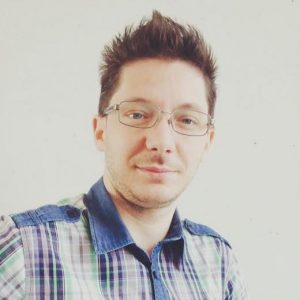 Luca Ferrucci, ISTI-CNR, luca.ferrucciATisti.cnr.it, General Chair
Luca Ferrucci, ISTI-CNR, luca.ferrucciATisti.cnr.it, General Chair
Luca is a post-doc researcher at the ISTI-CNR in Pisa since 2014. He attended and organized several workshops in the field of V&V supported by formal methods in 2014, 2015 and 2016. In the last years, his interests and research widely ranging from eGovernment tools and protocols for Certified electronic email and interoperability issues between different international standards, to research in domotics interoperability frameworks, as member of the SHELL italian national research project and, during last year, orchestration and resource management in Cloud and Edge cloud computing as a member of the H2020 ACCORDION and Charity european research projects.
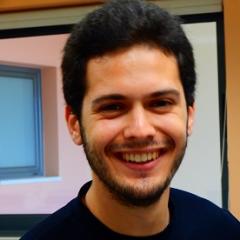 Ioannis Kontopoulos, Harokopio University, kontopoulosAThua.gr, Program Co-Chair
Ioannis Kontopoulos, Harokopio University, kontopoulosAThua.gr, Program Co-Chair
Ioannis Kontopoulos received his BSc from the department of Informatics and Telematics of Harokopio University of Athens in 2016. He is currently a post-doc researcher working at the same department. His major research interests revolve around Distributed Systems, Big Data analysis and processing, real-time stream processing, spatio-temporal and trajectory analysis, machine learning. He has been involved in several EU and national funded projects including Datacron (H2020), MASTER (H2020-MSCA-RISE-2020), Smartship (H2020-MSCA-RISE-2020) and GLASSEAS (OP Human Resources Development, Education and Lifelong Learning).
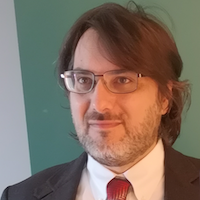 Massimo Coppola, ISTI-CNR, massimo.coppolaATisti.cnr.it, Co-Chair
Massimo Coppola, ISTI-CNR, massimo.coppolaATisti.cnr.it, Co-Chair
Massimo is a researcher at the ISTI-CNR. His research interests revolve around parallel and distributed platforms and programming, and their application to real world applications. They notably include Cloud computing and Federations, tools and performance models for structured parallel computing. He has been involved, as a proposer and participant, in a number of EU projects including lately H2020 EU projects Basmati, ACCORDION, TEACHING, and CHARITY.
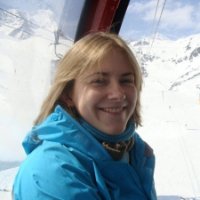 Hanna Kavalionak, ISTI-CNR, hanna.kavalionakATisti.cnr.it, Program Co-Chair
Hanna Kavalionak, ISTI-CNR, hanna.kavalionakATisti.cnr.it, Program Co-Chair
Hanna is a post-doc researcher at the ISTI-CNR. She is currently working in cloud and edge resource indexing and discovery in the context of the H2020 ACCORDION european research project. Her research interests include peer-to-peer networks, data analyses solutions for indoor localization, and modeling and dependability analyses of complex cyber-physical systems of systems, in which she has published several papers in international conferences and journals.
Register to FRAME!
The 2nd workshop on Flexible Resource and Application Management on the Edge to researchers, industry stakeholders, academics and PhD students.
Register!
